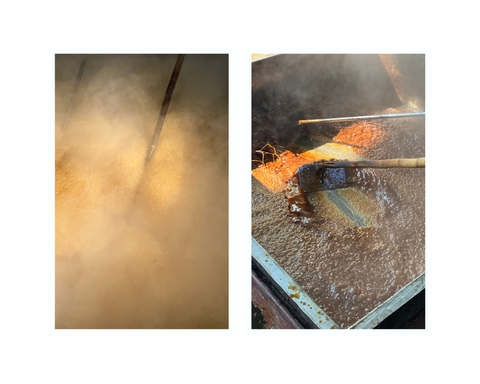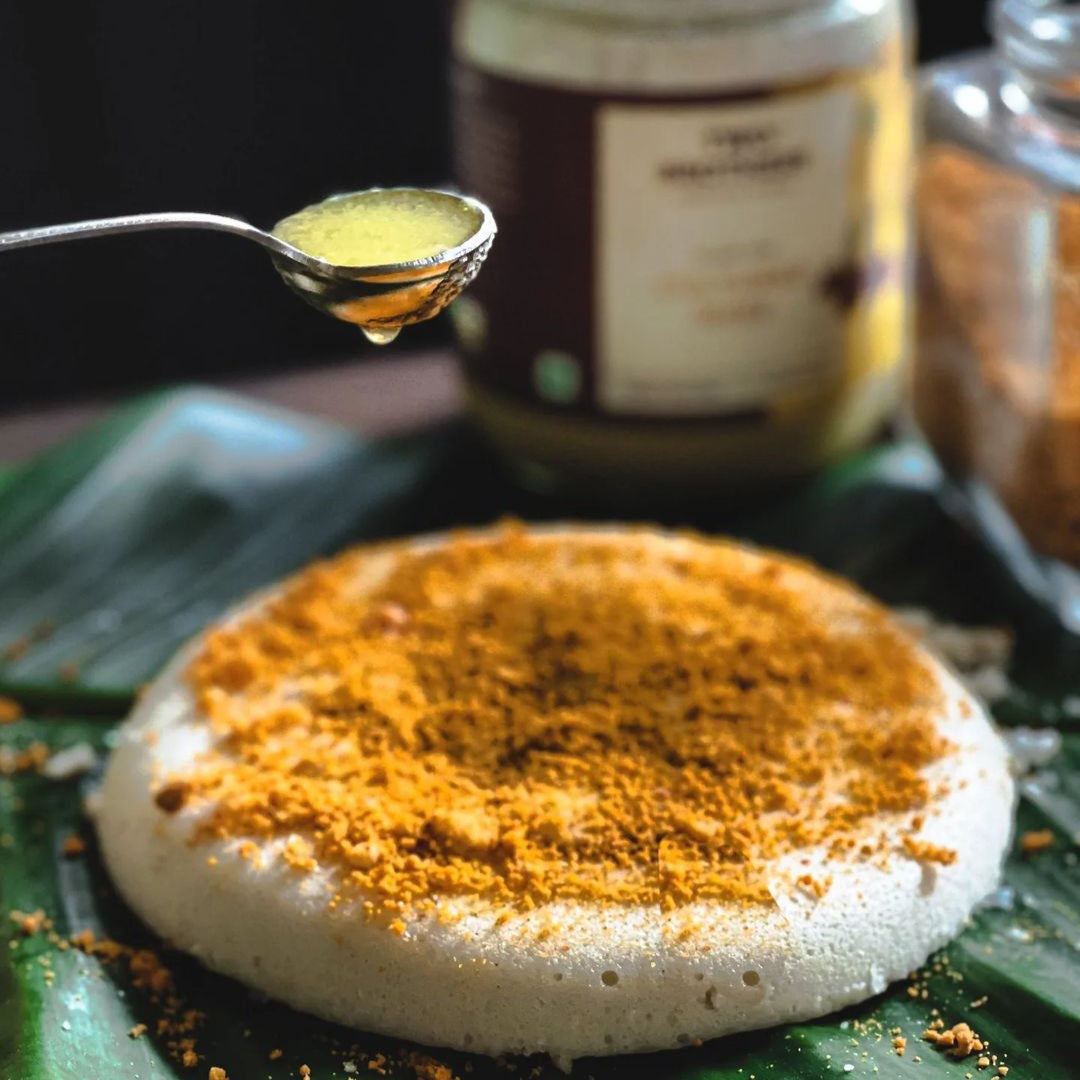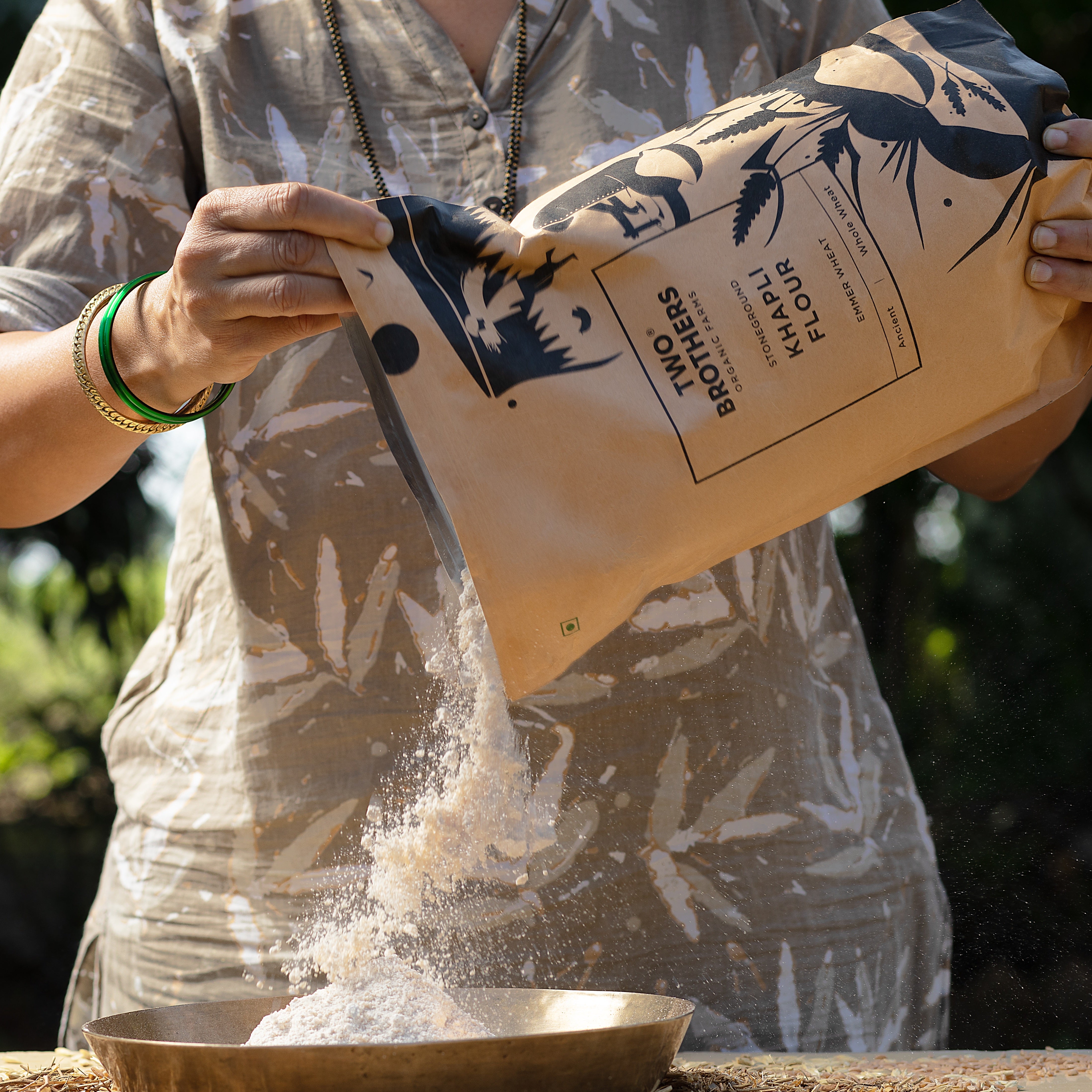Not once would we have heard anyone say “sugar is good for you” but that’s not the case with jaggery.
Most Indians who have elders in the family would have often been told that gur is healthy. Therein lies the basic difference between white sugar and jaggery. White sugar is all sweetness and calories with zero health benefits.
The only ways that jaggery is similar to sugar is in the calorific value and that both are made from sugarcane juice. Other than that choosing white sugar over jaggery is like choosing an artificially sweetened drink over natural fruit juice.

- So when folks say that white sugar and jaggery are the same , they are either referring only to the calorific value or they are speaking from a sense of complacency and convenience of not being better informed.
- The obsession with ‘white’ is the reason for the existence of refined foods.
- From flour, rice, sugar, cooking oils and lots more, polishing and bleaching became the ways of brightening food and making it look more appetising.
- What this also did was it stripped the foods completely of the minerals, fibre and antioxidants.
- The lure of food looking brighter is what led to a shift from jaggery to white sugar.
- The chemicals used in the processing of refined sugar have been found to be highly detrimental to health.
- With the avalanche of (refined sugar) mithai ,cakes, confections and desserts around us ,every day ,even when there isn’t a festival or celebration is the reason why white sugar is causing dangerous spikes in blood sugar levels without enough physical activity to counter it.
JAGGERY is not a recent ‘super food’

- It has existed for centuries and forms the core of all traditional Indian sweets;
- Shankarpalli,
- Pongal,
- Sondesh,
- Til ladoo,
- Mishti doi,
- Payasam and so much more.

In fact India has much more natural sweeteners which were a huge part of not just its culinary heritage but added a special quality to the taste along with valuable nutrients.
- The irony is that today we live in a world where
- Gyms,
- HIIT workouts,
- Marathons,
- Cyclothon,
- Trekking
- Swimming
- Are the ways to beat ageing, stay young and feel alive.

- But, try to suggest a recipe for a chocolate cake made with coconut sugar and the (reflex) grimace on the very same ‘fit’ faces is amusing and shows a lack of awareness where food and exercise need to exist on the same page.
- If we read up nutrition facts on sugarcane juice, it is nothing short of a revelation. Despite the high level of sweetness (in taste),it is an excellent natural detox for the liver, kidneys and flushes toxins…yes better than the infamous cranberry juice (out of a sterile tetrapack!)
- The jaggery that is made by slowly heating, results in a thickening of the sap which is poured into moulds to cool and solidify.
- Why else do traditional breakfasts in Central and North India include hot khapli rotis, gur and ghee. It’s the brain food and brawn food of champions (in any field of choice) Close on the heels is the dosai and then pagu (liquid jaggery) meal,which is relished, in the South of India.
PALM JAGGERY is another type of natural sweetener
- It is made by people who have lived most of their lives surrounded by the ice apple (palmyra) trees.

- The female tree produces the fruit while the male tree nodules produce the colourless sap.

- The process of tapping this sap and collecting it before it ferments is a laborious process which starts at the crack of dawn.

- By mid afternoon, the caramelised deep brown palm sugar cakes are left to rest in wooden moulds.

- Sometimes coconut shells are also used as moulds and ingredients like dry ginger are added.
- This is the famous sukku karupatti from the interiors of TamilNadu.
- It’s a fantastic addition to tea or coffee in the winter months.
- The heat from the dry ginger adds warmth and gingerol which is a phenolic phytochemical found in ginger.
- It aids in digestion and gastro wellness.
- Palm jaggery has a more intense flavour when compared to sugarcane jaggery and works beautifully when used to make sweet pongal, coconut barfi, kadalai mittai , pori urandai and so many dishes which enterprising cooks turn out, keeping in mind both flavour and nutrition.
- There really is nothing stopping us from experimenting with these natural sugars.
- We need to sacrifice the image of that bright yellow lemon cake that glares back at us from glossy magazines and replace it with equally delicious lemon cakes which may not be the world’s version of the ‘perfect’ colour ! But what we do get is a chance to “eat our cakes and have it too “!!!
- A rose sherbet with palm jaggery may not be instagram worthy but one sip and you will be hooked. As far as the photos go, that’s what we have photoshop for , right ?!

Let’s face it…what really matters is the taste
- It can look terrific and be picture perfect but if it isn’t palatable ,no one is going back for seconds.
- That’s where natural sweeteners win.
- They carry not just a cloying sweetness but a rich taste which has layers of depth which the taste buds pick up on.
- Because of the complex nature of these natural sugars (minerals and compounds) ,it releases slowly into the body.
- So we aren’t talking about consumption of calories but about calories which have benefits attached to them.
Basically as they say “the calories have to be worth it“

- The fact that small nuggets of jaggery are still given to factory workers is proof enough of its cleansing properties.
- Workers at cotton mills and factories where they breathe in fine particles are susceptible to premature lung deterioration.
- The small piece of jaggery given every day is to keep the respiratory and digestive system in order.
- White sugar is completely devoid of adding any such benefits to health.
- Ask any voracious chaat eater and she/he will insist that the date syrup and jaggery sweetened tamarind chutney is one of the best parts about this complex mix of tangy, spicy ,sweet and crunchy mix of flavours and textures.
- Dates are recommended for the daily dosage of iron and the sticky sweet date syrup made by cooking pitted dates with water is a wonderful natural sweetener.
- It holds its own as does our precious mono floral honeys, gathered from the lap of nature’s most nectar filled blossoms.
Understanding how our brains respond to the pleasure senses on our tongue when we eat food is a clear indication of how much we respond towards sweet tasting foods.
- As we explore this path of eating conscientiously , we find less and less reasons why we need to stay on the refined sugar trail.
- We are abundantly blessed (to put it mildly) with the huge gamut of natural sweeteners which are available to us, sourced and made in our own land.
- The production of these natural sugars also keeps the indigenous professions alive and sustains the livelihoods of the people who have imbibed these crafts from their elders.
In the past 6-7 years, COCONUT SUGAR has generated a decent amount of curiosity.
- Technically it is not derived from coconuts but from coconut blossoms, so it is actually coconut blossom sugar.
- In a similar principle as the palm jaggery, a small incision is made at the base of the butter yellow coconut blossom fronds. The sap is collected and then there are several methods which lead to the coconut blossom sugar production, one being the patented ice box method.
- What is truly marvellous is that we have people who are committed to such intricate extraction and production processes without using any harmful chemicals.
To still follow an ant trail leading up to the white sugar jar is like plunging headlong into a shallow well lined with rocks !
So , it is grossly inaccurate to liken white sugar to other natural sweeteners. It is actually a nasty wolf in sweet clothing.
Shop the collection
Shop the collection
- Shop Sugarcane Jaggery Block
- Shop Crushed Sugarcane Granular
- Shop Jaggery Nuggets
- Shop Date Palm Jaggery Block
- Shop Kaakvi
- Shop Date Palm jaggery Liquid
- Shop All Products










